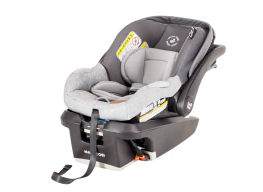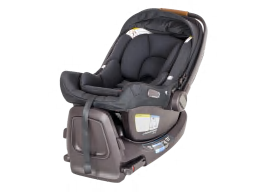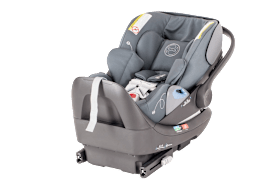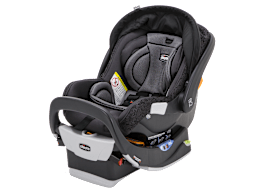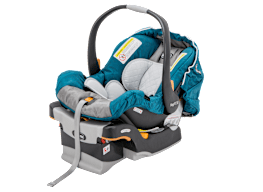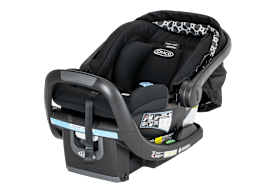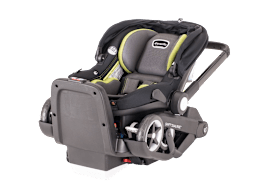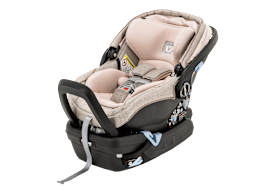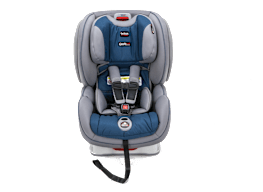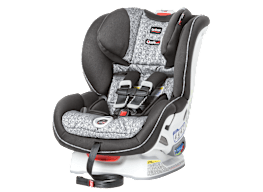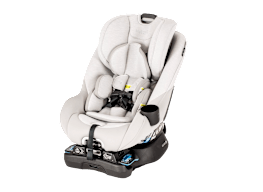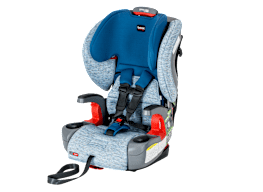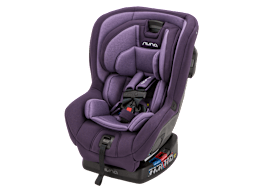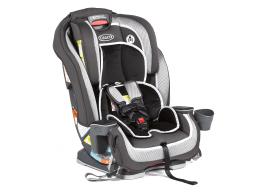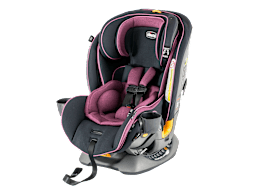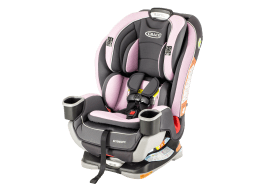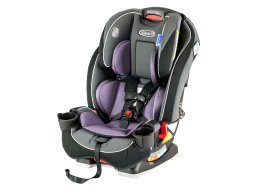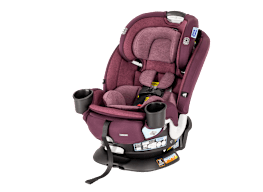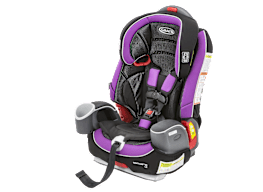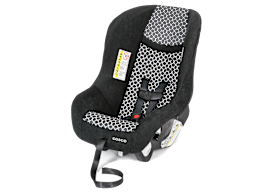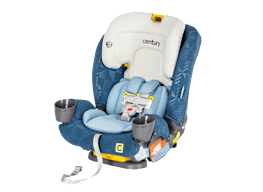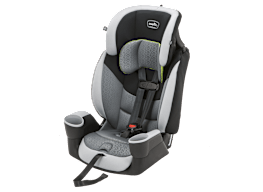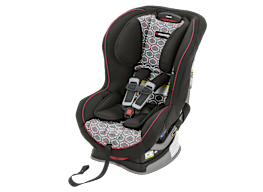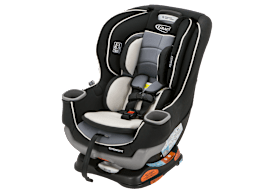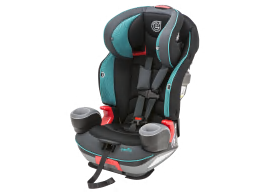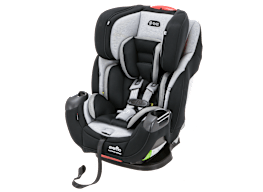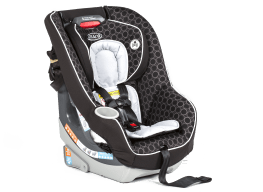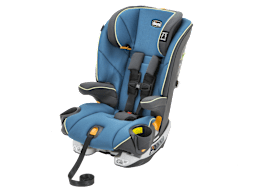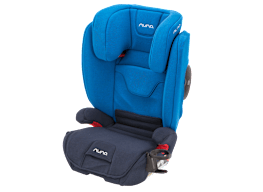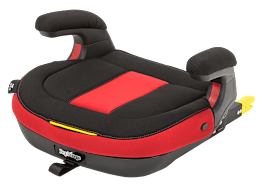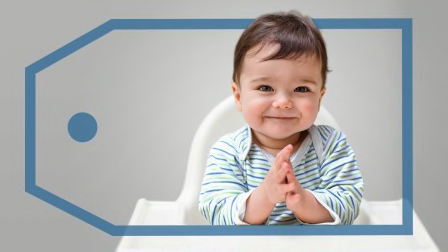Do's and Don'ts of Infant Car Seat Use
Safety tips for inside and outside a vehicle
Many parents with newborns rely on the convenience of an infant car seat. With an infant seat, you can remove a sleeping baby from a car without unbuckling her and click the carrier right into a stroller.
But that convenience can also cause problems because it might lead parents and caregivers to inadvertently put a baby’s safety at risk.
In the Car
DON’T put your infant seat in the front row or have it forward-facing in the rear (shown below).

Photo: John Powers/Consumer Reports Photo: John Powers/Consumer Reports
DO keep your infant seat rear-facing in the back seat of your car (shown below). A baby’s head and spine are better protected from injury when he or she rides facing the back. Rear-facing child seats in the front seat are at risk from airbags that deploy.

Photo: John Powers/Consumer Reports Photo: John Powers/Consumer Reports
DON’T install your infant car seat too upright or reclined too far.
DO install your infant car seat at the appropriate recline angle. Recline angles are designed to keep the youngest children tilted enough so that their head doesn’t fall forward and restrict their airway but not so reclined as to increase their risk for injury in a crash. When installing your infant seat, pay close attention to the recline indicator, found on the seat’s base or carrier, to ensure the proper position for your baby.
DON’T hang toys from the carrier handle (shown below).
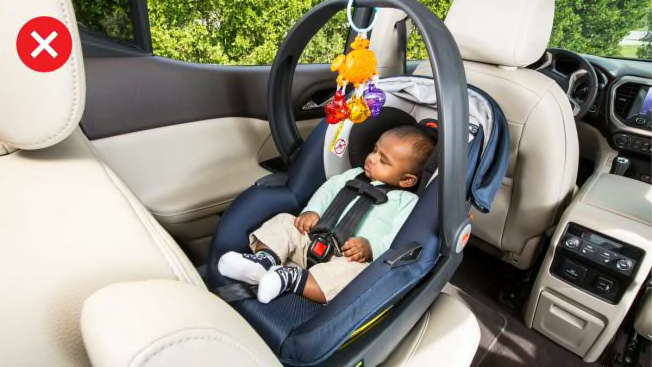
Photo: John Powers/Consumer Reports Photo: John Powers/Consumer Reports
DO keep toys in hand or tucked away. Toys are a nice diversion for a baby, but they can become flying projectiles in a crash.
DON’T secure your baby in an infant seat while he is wearing a puffy winter coat.
DO harness her in a light jacket and place a blanket over the harness. Puffy coats can compress during a crash and create extra space between the harness and your baby, making him or her less secure.
Out of the Car
DON’T place your infant seat on top of your grocery cart (shown below). That spot is usually where a toddler could sit.
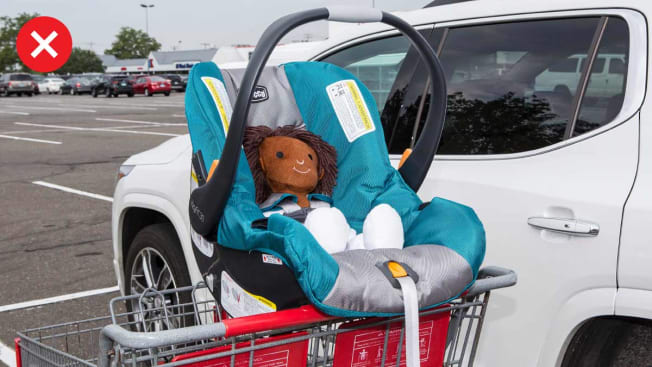
Photo: Emily Thomas/Consumer Reports Photo: Emily Thomas/Consumer Reports
DO place the infant seat in the large basket of the grocery cart (shown below). Unlike in your car or on your stroller, there’s no locking mechanism on grocery carts for an infant seat, increasing the risk of the seat (and your child) falling off the cart.
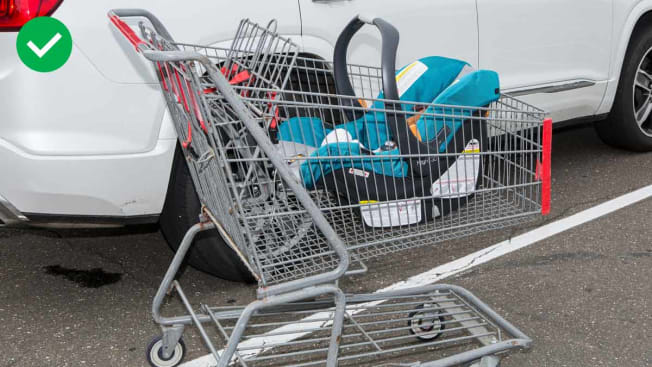
Photo: Emily Thomas/Consumer Reports Photo: Emily Thomas/Consumer Reports
DON’T use your child’s car seat as a substitute for a crib.
DO move your baby to a firmer, flatter sleep surface, such as a crib or bassinet, as soon as you can for the safest sleep. The American Academy of Pediatrics (AAP) says that using a crib reduces the potential for sudden infant death syndrome (SIDS).
DON’T leave your infant seat on any elevated or soft surfaces, such as a bed, sofa, countertop, or table.
DO place the infant seat on the floor, in the car, or on a compatible stroller. As the AAP cautions, a baby’s activity in the seat could cause the infant seat to move and potentially fall from an elevated surface, such as a kitchen countertop. On softer surfaces, the incline of the seat could change and cause the baby’s head to fall forward and obstruct his or her breathing. And an infant seat might turn over on soft surfaces. Babies can stay in their infant seat for short durations, but it shouldn’t be their primary place to sleep.
DON’T loosen your baby’s harness, undo a buckle (a chest clip or crotch buckle), or completely unbuckle her when moving the infant seat outside the car.
DO keep your baby fully and snugly harnessed even when he is outside the car. Babies can squirm, and a partly or loosely buckled harness could pose a strangulation risk. They also face a higher risk of falling out of an infant car seat if they’re unbuckled.
How to Install a Car Seat
Child seats have come a long way over the years, but proper installation is key. On the “Consumer 101” TV show, Consumer Reports expert Jennifer Stockburger shows host Jack Rico what to do to keep little ones safe in a car.



















